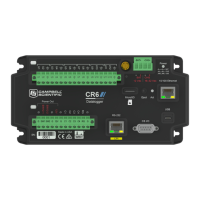9.9.1 Common causes
Some of the common causes of ground loops include the following:
l The drain wire of a shielded cable is connected to the local ground at both ends, and the
ground is already being carried by a conductor inside the cable. In this case, two wires, one
on either side of the cable shield, are connected to the ground nodes at both ends of the
cable.
l A long cable connects the grounds of two electrical devices, and the mounting structure or
grounding rod also directly connects the grounds of each device to the local earth ground.
The two paths, in this case, are the connecting cable and earth itself.
l When electrical devices are connected to a common metal chassis such as an instrument
tower, the structure can create a ground path in parallel to the ground wires in sensor
cables running over the structure.
l Conductors connected to ground are found in most cables that connect to a data logger.
These include sensors cables, communication cables, and power cables. Any time one of
these cables connects to the same two endpoints as another cable, a ground loop is
formed.
9.9.2 Detrimental effects
The harm from a ground loop can be seen in different ways. One consideration is the
electromagnetically induced effect. This will manifest as an AC noise or pulse. As seen in FIGURE
9-1 (p. 143) the parallel conductive paths form an electrical loop that acts as an antenna to pick
up electromagnetic energy.
FIGURE 9-1. Stray AC magnetic fields picked up in loop antenna
9. Tips and troubleshooting 143

